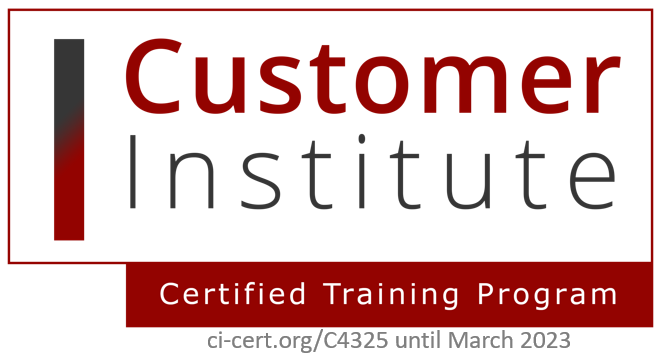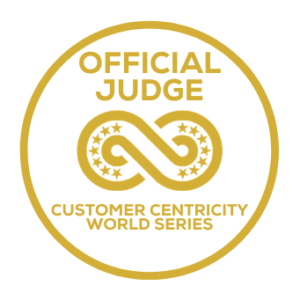Yellow Goldfish blog series
There should one ultimate driving metric in business (and life) and that’s Happiness. A Yellow Goldfish is anytime a business does a little extra to contribute to the happiness of its customers, employees, or society. Based on nearly 300 case studies, Yellow Goldfish, a book published by Stan Phelps and Rosaria Cirillo in September 2018, covers nine ways increasing happiness in business can drive growth, productivity and prosperity for everyone and it’s available for sales on Amazon & Kindle. Broken into three main sections, Yellow Goldfish will help you and your company understand WHY happiness in business matters, WHAT you can do to contribute to happiness (of customers, employees and society), and HOW to do so.
This post is part of a wider series with key insights from Yellow Goldfish. Find here the complete list of all this series’ posts that will be published every Monday and Wednesday from September 4th to September 18th (which marks Yellow Goldfish 1-year birthday).
Why Happiness Should Come First In Business
In the first post of this series, we reflected on why companies are in business and we dived into the five schools of thought or different management approaches that companies have adopted over the past few decades: profit, customers, employees or purpose first. We shared why we believe that “Happiness is a new way forward, it should be what comes first and it’s the ultimate business metric.”
Analyzing nearly 300 cases, we have identified nine ways in which business can increase happiness to drive growth, productivity and prosperity for everyone, and we call “Yellow Goldfish” the little extra that a business does to contribute to the happiness of its customers, employees, or society.
In this post we want to share why a Goldfish and why Yellow.
Why a Goldfish?
The origin of the goldfish dates back to 2009 and it has become a signature part of Stan Phelps’ Goldfish book series. The goldfish represents something small, but despite its size, something with the ability to make a big difference. Yellow Goldfish is the seventh color in the series.
The first part of the inspiration for the goldfish came from Kimpton Hotels. The boutique hotel chain introduced something new in 2001. The Kimpton Hotel Monaco began to offer travelers the opportunity to adopt a temporary travel companion for their stay: a goldfish. They call the program Guppy Love.
“The ‘Guppy Love’ program is a fun extension of our pet-friendly nature as well as our emphasis on indulging the senses to heighten the travel experience,” says Steve Pinetti, Senior Vice President of Sales & Marketing for Kimpton Hotels and Restaurants, of which Hotel Monaco is part of their premier collection.
The second part of the goldfish inspiration came from the peculiar growth of a goldfish. The average common goldfish is between three to four inches in length (ten centimeters), yet the largest in the world is almost six times that size!
How can there be such a disparity between regular goldfish and their monster cousins? Well, it turns out that the growth of the goldfish is determined by five factors. Just like goldfish, not all businesses grow equally, and we believe that the growth of a product or service faces the same five factors that affect the growth of a goldfish.
- #1. Size of the environment = The market
GROWTH FACTOR: The size of the bowl or pond.
IMPACT: Direct correlation. The larger the bowl or pond, the larger the goldfish can grow. Similarly, the smaller the market in business, the lesser the growth potential. - #2. Number of other goldfish in the bowl or pond = Competition
GROWTH FACTOR: The number of goldfish in the same bowl or pond.
IMPACT: Inverse correlation. The more goldfish, the less growth. Similarly, the less competition in business, the more growth opportunity exists. - #3. The quality of the water = The economy
GROWTH FACTOR: The clarity and amount of nutrients in the water.
IMPACT: Direct correlation. The better the quality, the larger the growth. Similarly, the weaker the economy or capital markets in business, the more difficult it is to grow. - #4. The first 120 days of life = Startup phase or a new product launch
GROWTH FACTOR: The nourishment and treatment received as a fry (baby goldfish).
IMPACT: Direct correlation. The lower the quality of the food, water, and treatment, the more the goldfish will be stunted for future growth. Similarly, in business, the stronger the leadership and capital for a start-up, the better the growth. - #5. Genetic makeup = Differentiation
GROWTH FACTOR: The genetic makeup of the goldfish.
IMPACT: Direct correlation. The poorer the genes or the less differentiated, the less the goldfish can grow. Similarly, in business, the more differentiated the product or service from the competition, the better the chance for growth.
Which of the five factors can you control?
Let’s assume you have an existing product or service and have been in business for more than four months. The only thing you have control over is your business’s genetic makeup or how you differentiate your product or service.
In goldfish terms, how do you stand out in a sea of sameness? In Yellow Goldfish we share how your differentiation can be driven by happiness.
Why Yellow?
Yellow is the seventh color in the Goldfish series. So why did we choose yellow? In addition to the fact that Yellow represents happiness in nearly every country in the world (fun fact: Greece and Mexico being the main exceptions), there are three main reasons.
#1. Primary – First, it’s because yellow is one of the three primary colors. It is the brightest and most cheerful of all the colors in the spectrum. As a color specialist and the executive director of the Pantone Color Institute, Leatrice Eiseman has conducted various color word association studies on thousands of people over the last 30 years. She has found that the first words that consistently come to mind when people see the color yellow are “warmth,” “cheer,” “happiness,” and sometimes even “playfulness.”
Why do we have these feelings? It’s because we associate yellow with the sun. Interestingly, the sun is actually white. We perceive it as yellow or orange because of the higher wavelengths of these colors. Yellow is scattered less easily by Earth’s atmosphere, leaving the color for us to see. Blue, on the other hand, has low wavelengths, which explains why it is strewn across the sky. According to Empowered By Color, because yellow is the lightest hue of the spectrum, the color is uplifting and illuminating, offering hope, happiness, cheerfulness, and fun.
Tal Ben-Shahar uses the metaphor that happiness is like the light of the sun. If you look straight into it it’s blinding, so instead of pursuing happiness directly (looking into the sun), we need to pursue happiness indirectly, focusing on things that make us happy. In business, this is the equivalent of focusing on the nine types of Yellow Goldfish.
The sun also represents warmth, which leads us to our next reason.
#2. Warmth – We use yellow as a metaphor because of warmth. In our evolution as humans, we are programmed to look for warmth instinctively. As we have evolved, we developed skills integral to our survival. One skill was the ability to make judgments about our surroundings with a high degree of speed and accuracy. As we walked out of the “cave,” our senses immediately jumped into survival mode. In a split second, we assessed everyone we encountered on two basic criteria:
1. Were they a threat?
2. What was their ability to carry out that threat?
Research conducted by Susan T. Fiske and Chris Malone, and shared in the book The Human Brand, has shown that over 80 percent of our judgements are based on these two factors even today. Assigning characteristics to our perception, we can label these as warmth and competence. These perceptions don’t just apply to people. We also apply the same standards to products and companies. We automatically perceive and judge their behaviors on a subconscious level.
“Companies need to embrace significant change in the way they do business with customers, better aligning their policies, practices and processes to reflect warmth and competence.”
#3. Smiles – The round smiley face created by American graphic artist Harvey Ross Ball.
According to the Smithsonian, Ball was engaged by State Mutual Life Assurance Company of Worcester, Massachusetts, to create a happy face. The goal by State Mutual, now known as Hanover Insurance, was to raise the morale of the employees. Ball’s iconic graphic involved a bright yellow background, dark oval eyes, a full smile, and creases at the sides of the mouth. It took 10 minutes to create the smiley face and Ball was paid $45 for the graphic.
Over the next fifty years, versions of the smiley face would be imprinted on more than fifty million buttons and became popular around the world. It has become an icon for happiness and is responsible for spawning the development of digital emoticons. On the Internet, the smiley has become a visual means of conveying happiness.
In the next posts of this series, we will share the WHAT and HOW companies can – and, in our opinion, have the responsibility to – contribute to happiness adding yellow goldfishes to their business. Stay tuned!
This post is part of a wider series with key insights from Yellow Goldfish. Find here the complete list of all this series’ posts that will be published every Monday and Wednesday from September 4th to September 18th (which marks Yellow Goldfish 1-year birthday).
- Why Happiness in business? – From Yellow Goldfish Overview Section
- Why Yellow Goldfish? – From Yellow Goldfish Overview Section.
- Uncovering H.A.P.P.I.N.E.S.S. in business – From Yellow Goldfish What Section – The Types
- Brief Overview of companies and examples covered in Yellow Goldfish – From Yellow Goldfish What & How Section
- Drive Happiness G.R.O.W.T.H. in Six Stages – From Yellow Goldfish How Section
- Yellow Goldfish Top Five Takeaways
Follow Rosaria Cirillo on Linkedin & wownowexp on Instagram or sign up below to be notified as soon as a new blog post is published.
* Sharing is happiness. If our message resonates with you, please help us share it and let’s start building together the world we wish to live in. Thank you! #YellowGoldfish #HappinessDrivenGrowth
** If you would like to know more about how to pursue Happiness Driven Growth in your company or would like us to deliver an engaging talk about it at your event, get in touch or simply follow Rosaria Cirillo on LinkedIn & Instagram to receive her inspirational DOSE of Happiness.
*** Did you already enjoy reading Yellow Goldfish and want to help us inspire more persons? Helps us spread the word by sharing the quote that most resonated with you and by posting a picture of you with our book on Twitter, Instagram and/or LinkedIn using hashtags:
#YellowGoldfish
#YGBITW (Yellow Goldfish Book In The World)
#YellowGoldfishBook
#YellowGoldfishQuote
Yellow Goldfish book has been published on September 2018 and is the result of collecting and analyzing nearly 300 cases and identifying the common threads. It covers nine ways increasing happiness in business can drive growth, productivity and prosperity for everyone and it’s available for sales on Amazon. We hope it can help more companies understand WHY happiness in business matters, WHAT they can do to contribute to happiness of customers, employees and society, and HOW to do so.
If you would like to know more about Yellow Goldfish:




 A (little Italian) sunshine of energy, enthusiasm, and passion, with a mission to bring more happiness in the world one interaction at the time, the business world being my chosen playground!
I inspire and empower conscious leaders to nurture their happiness (moving from depleting to enriching emotions) and to move from depleting to enriching experiences, choosing, designing, and delivering WOW life-enriching interactions that contribute to everyone’s HAPPINESS, so they can achieve business and personal prosperity, making happiness their competitive advantage
A (little Italian) sunshine of energy, enthusiasm, and passion, with a mission to bring more happiness in the world one interaction at the time, the business world being my chosen playground!
I inspire and empower conscious leaders to nurture their happiness (moving from depleting to enriching emotions) and to move from depleting to enriching experiences, choosing, designing, and delivering WOW life-enriching interactions that contribute to everyone’s HAPPINESS, so they can achieve business and personal prosperity, making happiness their competitive advantage 










Trackbacks/Pingbacks